Multan
| Multan مُلتان | ||||||
|---|---|---|---|---|---|---|
| City District / Divisional Capital | ||||||
| ||||||
 Multan Location in Pakistan | ||||||
| Coordinates: 30°11′52″N 71°28′11″E / 30.19778°N 71.46972°ECoordinates: 30°11′52″N 71°28′11″E / 30.19778°N 71.46972°E | ||||||
| Country | Pakistan | |||||
| Region | Punjab | |||||
| District | Multan District | |||||
| Autonomous towns | 6 | |||||
| Union councils | 4 | |||||
| Government | ||||||
| • Type | Municipal Corporation | |||||
| • Mayor of Multan | TBD | |||||
| • Deputy Mayor of Multan | TBD | |||||
| Area | ||||||
| • City District / Divisional Capital | 133 km2 (51 sq mi) | |||||
| Elevation | 122 m (400 ft) | |||||
| Population (2015)[1] | ||||||
| • City District / Divisional Capital | 3,117,000 | |||||
| • Urban | 2,050,000 | |||||
| Languages | ||||||
| • Official | Punjabi | |||||
| Time zone | PST (UTC+5) | |||||
| Area code(s) | 061 | |||||
| Website | www.multan.gov.pk | |||||
Multan (Urdu: مُلتان) (![]() pronunciation ), is a city in Punjab, Pakistan. It is Pakistan's 5th largest city by population[2] and 3rd largest city by area. The city is located on the banks of the Chenab River
pronunciation ), is a city in Punjab, Pakistan. It is Pakistan's 5th largest city by population[2] and 3rd largest city by area. The city is located on the banks of the Chenab River
Multan is also titled as the City of Sufis, City of Saints and Madinat-ul-Auliya because of the large number of shrines and Sufi saints from the city. The city is blanketed with bazaars, mosques, shrines, and ornate tombs. Multan is also famous for ancient Hindu temples, the most famous temple being Prahladpuri Temple. The Holi or Holika festival of the Hindus originated from this temple. Multan is also the birthplace of Fariduddin Ganjshakar (popularly known as "Baba Farid"), recognised as the first major poet of the Punjabi language. Multan is located in a bend created by five rivers of central Pakistan. The Sutlej River separates it from Bahawalpur and the Chenab River from Muzaffar Garh. One of the oldest cities in the world dating back 6000 years, the city has grown to become an influential political and economical centre for the country, with a dry port and excellent transport links. Multan is famous for its crops: wheat, cotton and sugar cane, mangoes, citrus, guavas, and pomegranates.
Etymology
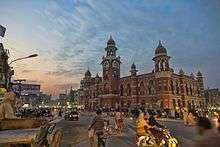
The city of Multan got its name from the Sanskrit name for the pre-Islamic Hindu Multan Sun Temple called Mulasthana.[3][4]
Government
Administrators who are government servants have the powers of Nazims (Mayor). Multan district is spread over an area of 3,721 square kilometres (1,437 square miles), comprising four tehsils: Multan City, Multan Saddar, Shujabad and Jalalpur Pirwala. In 2005 Multan was reorganised as a City District composed of six autonomous towns:
- Bosan
- Shah Rukan e Alam
- Mumtazabad
- Sher Shah
- Shujabad
- Jalalpur Pirwala
- Multan Cantt
- Muneerabad (Rana Town)
- New Multan
- Qaisar Abad
Demographics
Multan city had a population of 1,197,384 in the 1998 census.[5]
History
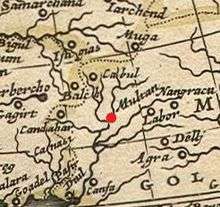
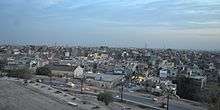
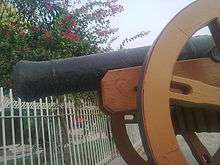


According to Hindu legends, it was the capital of the Trigarta Kingdom at the time of the Mahabharata war, ruled by the Katoch Rajput Dynasty. Multan has had various names over the years. According to Hindu mythology, it was originally called Kashtpur (Kashyapapura) after a Hindu sage named Kashyapa, which is also the Gotra used by the Katoch dynasty.[6] Other names were Hanspur (Hamsapura), Bagpur (Vegapura), Sanb or Sanahpur (Sambapura).[7][8] It has been postulated that the current name is derived from the Sanskrit name Mulasthana named after a Sun Temple.[4][9] Multan has frequently been a site of conflict due to its location on a major invasion route between South Asia and Central Asia. It was conquered by Alexander the Great in 326 BC.
In the mid-5th century CE, the city was attacked by a group of Hephthalite nomads led by Toramana.
Multan was conquered along with Sindh by Muhammad bin Qasim, from the local ruler Chach of Alor circa 712 AD. Following bin Qasim's conquest, the city was securely under Muslim rule, although it was in effect an independent state and most of the subjects were non-Muslim.
In 965 CE, Multan was conquered by Halam b. Shayban, an Ismaili da'i. Soon after, Multan was attacked by Mahmud of Ghazni, destabilising the Ismaili state. Mahmud of Ghazni invaded Multan in 1005 CE, conducting a series of campaigns during which the Ismailis of Multan were massacred.[10] In an effort to gain his allegiance, the Fatimid Ismaili Imam-caliph al-Hakim dispatched an envoy to Mahmud two years later. This attempt appeared to be unsuccessful and the Ghaznawids continued to attack other Ismaili strongholds in Sindh to suppress any resurgence of the community in the region. In 1032CE Mahmud's very own vizier, Hasanak was executed for having accepted a cloak from the Imam-caliph on suspicions that he had become an adherent of the Ismaili faith.[10] Mahmud's purges of the region led several scholars including Stern to believe that the Ghaznawid purges of the region drove out Ismailism from the area, however recently discovered letters dating to 1083 and 1088 demonstrate continued Ismaili activity in the region, as the Imam-caliph Mustansir dispatched new da'is to replace those who were killed in the attacks.[10]
Multan's location at the entrance to the sub-continent resulted in it being invaded by a long series of conquerors on their way to Delhi. Timur, Babur and many others passed through the city, leaving much destruction in their wake. This violence continued as when Muhammad of Ghor attacked the city and drove out the remaining Ismailis[11] whom he deemed to be heretics, in stark contrast to his predecessor, the Ghurid Sultan 'Ala' al-Din who welcomed numerous envoys from the Ismaili state of Alamut and according to the historian Juzjani, gave them "great reverence"[10] Following annexation to Mughal empire in 1557 CE, at the beginning of emperor Akbar's rule;[12] Multan enjoyed 200 years of peace, and became known as Dar al-Aman (Abode of Peace). Akbar was known as a wise ruler, setting reasonable taxes, creating effective government and being tolerant of religious differences.
Multan witnessed difficult times as Mughal rule declined in the early 1700s, starting after death of emperor Aurangzeb in 1707. The last Naib Subahdars appointed by Farrukhsiyar at Multan were Khan Zaman Khan Ali Asghar ibn Kartalab Khan Bahadur Shahi Qazi Ghulam Mustafa and then Aqidat Khan ibn Ameer Khan.[13] In 1747, Ahmad Shah Durrani—who was born in Multan—rose to power. This counts as beginning of Durrani Empire. He captured Multan in 1752.[14]
In 1758, the Marathas under Raghunathrao captured Multan along with Lahore, Attock, Peshawar and Kashmir.[15][16]
The city was re-captured by Durrani in 1760. After the death of Ahmad Shah Durrani in 1772, the influence of the Durrani empire declined sharply over the next fifty years. Starting in the late 18th century, Multan was ruled locally by the Pashtun Sadozai and Khogyani aka Khakwani chieftains.
In 1817, Maharaja Ranjit Singh sent a body of troops to Multan under the command of Diwan Bhiwani Das to receive from Nawab Muzaffar Khan the tribute he owed to the Sikh Darbar. In 1818, Kharak Singh and Hindu Commander Diwan Misr Chand armies lay around Multan without making much initial headway. Maharaja Ranjit Singh sent a large cannon named Zamzama. Though in name Armies was commanded by Prince Kharak Singh; however, it was the military genius of Diwan Misr Chand which captured Multan Fort.
Muzzafar Khan urged the Muslim population of Multan to fight a holy war against Sikhs and Hindus; however, the heroic tactics of Muzzafar Khan failed as Sikh armies were able to suppress the religious war of liberation of the Multan population. In the battle Diwan Misr Chand led Sikh armies to a decisive victory over Durrani General of Multan Nawab Muzaffar Khan. Muzzafar Khan and seven of his sons were killed before the Multan fort finally fell on 2 March 1818 in the Battle of Multan.[17][18] The death of Durrani General Nawab Muzzafar Khan brought the death of Muslim rule in Multan. After the defeat of Muslims in 1818, Multan again came under Muslims rule only when the British Empire gave independence to Pakistan.[19] Multan was made part of the British Raj. The British built some rail routes to the city, but its industrial capacity was never developed.
The predominantly Muslim population supported Muslim League and Pakistan Movement. After the independence of Pakistan in 1947, the minority Hindus and Sikhs migrated to India while the Muslim refugees from India settled in Multan. It initially lacked industry, hospitals and universities. Since then, there has been some industrial growth, and the city's population is continually growing. But the old city continues to be in a dilapidated state, and many monuments wear the effects of the warfare that has visited the city.
Multan has been developed as the commercial and industrial centre of southern Punjab, as it is connected with the rest of the Pakistan through rail and air including the other industrial hubs such as Lahore, Karachi, Gujranwala, Quetta and Faisalabad. Industries include fertiliser, cosmetics, glass manufacturing, cotton production and processing, large textile units, flour mills, sugar and oil mills, and large-scale power generation projects. It is famous for its handicrafts (carpets and ceramics) and cottage industries. Roughly 770 hectares (1,900 acres) of the city is forested. The Multan International Airport is served by several international airlines.
Geography and climate


The city of Multan is located in Punjab. The nearest major cities are Dera Ghazi Khan and Bahawalpur. The area around the city is a flat, alluvial plain and is ideal for agriculture, with many citrus and mango farms. There are many canals that cut across the Multan District, providing water from nearby farms. This makes the land very fertile. However land close to the Chenab River is usually flooded in the monsoon season.
Multan features an arid climate (Köppen climate classification BWh) with very hot summers and mild winters. The city witnesses some of the most extreme weather in the country. The highest recorded temperature is approximately 52 °C (126 °F), and the lowest recorded temperature is approximately −1 °C (30 °F).[20][21] The average rainfall is roughly 186 millimetres (7.3 in). Dust storms are a common occurrence within the city.
| Multan | ||||||||||||||||||||||||||||||||||||||||||||||||||||||||||||
|---|---|---|---|---|---|---|---|---|---|---|---|---|---|---|---|---|---|---|---|---|---|---|---|---|---|---|---|---|---|---|---|---|---|---|---|---|---|---|---|---|---|---|---|---|---|---|---|---|---|---|---|---|---|---|---|---|---|---|---|---|
| Climate chart (explanation) | ||||||||||||||||||||||||||||||||||||||||||||||||||||||||||||
| ||||||||||||||||||||||||||||||||||||||||||||||||||||||||||||
| ||||||||||||||||||||||||||||||||||||||||||||||||||||||||||||
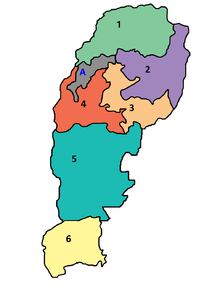
| Climate data for Multan | |||||||||||||
|---|---|---|---|---|---|---|---|---|---|---|---|---|---|
| Month | Jan | Feb | Mar | Apr | May | Jun | Jul | Aug | Sep | Oct | Nov | Dec | Year |
| Record high °C (°F) | 28.3 (82.9) |
32.0 (89.6) |
39.0 (102.2) |
45.0 (113) |
48.9 (120) |
52.0 (125.6) |
52.2 (126) |
45.0 (113) |
42.5 (108.5) |
40.6 (105.1) |
36.0 (96.8) |
29.0 (84.2) |
52.2 (126) |
| Average high °C (°F) | 21.0 (69.8) |
23.2 (73.8) |
28.5 (83.3) |
35.5 (95.9) |
40.4 (104.7) |
42.3 (108.1) |
39.2 (102.6) |
38.0 (100.4) |
37.2 (99) |
34.6 (94.3) |
28.5 (83.3) |
22.7 (72.9) |
32.59 (90.68) |
| Daily mean °C (°F) | 12.7 (54.9) |
15.4 (59.7) |
21.0 (69.8) |
27.5 (81.5) |
32.4 (90.3) |
35.5 (95.9) |
33.9 (93) |
33.0 (91.4) |
31.0 (87.8) |
26.4 (79.5) |
19.7 (67.5) |
14.1 (57.4) |
25.22 (77.39) |
| Average low °C (°F) | 4.5 (40.1) |
7.6 (45.7) |
13.5 (56.3) |
19.5 (67.1) |
24.4 (75.9) |
28.6 (83.5) |
28.7 (83.7) |
28.0 (82.4) |
24.9 (76.8) |
18.2 (64.8) |
10.9 (51.6) |
5.5 (41.9) |
17.86 (64.15) |
| Record low °C (°F) | −3.9 (25) |
−2.0 (28.4) |
3.3 (37.9) |
9.4 (48.9) |
13.5 (56.3) |
20.0 (68) |
21.1 (70) |
21.1 (70) |
16.7 (62.1) |
8.9 (48) |
0.6 (33.1) |
−1.1 (30) |
−3.9 (25) |
| Average precipitation mm (inches) | 7.2 (0.283) |
9.5 (0.374) |
19.5 (0.768) |
12.9 (0.508) |
9.8 (0.386) |
12.3 (0.484) |
61.3 (2.413) |
32.6 (1.283) |
10.8 (0.425) |
1.7 (0.067) |
2.3 (0.091) |
6.9 (0.272) |
186.8 (7.354) |
| Mean monthly sunshine hours | 222.3 | 211.6 | 250.8 | 273.3 | 293.5 | 266.8 | 265.0 | 277.6 | 277.6 | 274.9 | 255.0 | 229.2 | 3,097.6 |
| Source: NOAA (1961–1990)[22] | |||||||||||||
Education
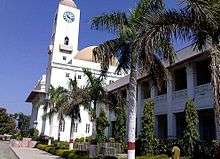
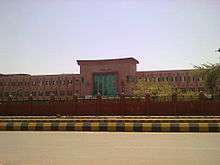
In 1950, then-Governor Abdur Rub Nishtar founded Nishtar Medical College . Doctor graduates of this institution have spread across the world, and many have become established names in the field of medicine. The new Nishtar Institute of Dentistry provides dental and surgical services to Multan and the adjoining cities. The pioneer Punjab Government-chartered Institute of Southern Punjab Multan is the 2nd largest institute in Multan and third largest in South Punjab. It was the first Education Institute in Punjab, and is the only private institute recognised by HEC in Multan.
Multan Public School & College is a public institution in Multan City for providing quality education to the students of Multan as well as the other southern backward areas of Multan. Multan Public School, known as a Divisional Public School, provides boarding facilities for the students of far-flung areas. Multan Public School has a fleet of Hino Buses for pick and drop of the students.
Air University Multan is a leading Public sector University providing state of the art Higher Education at affordable fee. Air University Multan Campus AUMC has established new standards of Excellence in Academia in southern Punjab with diverse culture of Research & Development in Science & Technology.
Pakistan Institute of Engineering and Technology (PIET) is the new engineering college in Multan. It offers BSc Electrical, Civil and Mechanical engineering.
The NFC Institute of Engineering and Technological Training Multan (NFC-IET) is the training centre of the National Fertilizer Corporation (NFC) of Pakistan. It is an engineering college serving mainly the areas of Southern Punjab province. It is one of the leading institutes in chemical engineering in Pakistan.
Bahauddin Zakariya University (formerly known as Multan University) is the main source of higher education for this region. The Swedish Institute of Technology in Multan is a campus of the Swedish Group of Technical Institutes, the largest private-sector organisation providing technical education and vocational training in the Punjab.[23] Multan Medical and Dental College is the only private medical institution in Southern Punjab. Now more universities from federal are also opening campuses in Multan, such as AIR university, NUML (National University of Modern Languages), and MMDC (Multan Medical and Dental College), a private medical college. The Government High School Rid, Moza Rid, Chk 2 Faiz Multan is affiliated to BISE Multan and shows satisfactory results at secondary education level. There are many well-known schools here. They are of international level. Such as PakTurk International Schools and Colleges , Beacon House , LGS , British International School and some public schools also offer quality education . Students get good facilities for education, many schools at government level are playing their role in literacy rate .
Transportation
 9numberChungi multan
9numberChungi multan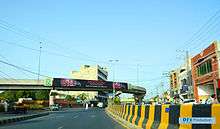 Nishtar Chowk Flyover
Nishtar Chowk Flyover Aerial view of Multan Ghanta Ghar Chawk
Aerial view of Multan Ghanta Ghar Chawk
Multan Metrobus
Multan Metrobus is a bus rapid transit for the city of Multan. It is currently under construction. Like Lahore Metrobus, it will have dedicated lanes with e-ticketing system.Multan metro bus service track is about 18.2 kilometres (11.3 miles) long.
Road
The district has concrete roads reaching up to 983.69 kilometres (611.24 miles). The district is linked with Khanewal, Lodhran and Muzaffargarh districts through concrete roads. Buses to Bahawalpur leave frequently, since it is located closely to the city. There are a variety of buses travelling farther from the city. Many of them are now air-conditioned with a fairly good safety record. The N-5 National Highway connects the city to connect to all parts of Pakistan. The road otherwise, known as GT Road, allows connections to Rawalpindi, Islamabad, Faisalabad, Karachi, Lahore as well as Bahawalpur. Coach services such as Daewoo Express, Faisal Movers Express, Niazi Express, KB transport, Nadir coach, Punjab Tourism Department, Skyways, Bilal Travels, and New Khan Bus Service are some of the most reliable coach companies operating out of Multan.
Railways
Multan is connected by rail with all parts of the country and lies on the main track between Karachi, Peshawar, Lahore and Quetta. The main Peshawar-Karachi railway line passes through Multan district. The district then links trains to nearby districts of Khanewal, Lodhran and Muzafargarh districts through the railway network.[24] Multan Cantonment railway station is the main railway station of Multan.
Airport
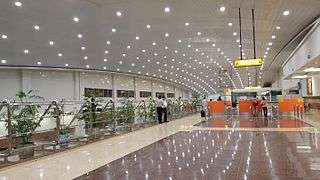
Multan International Airport is an airport situated 10 kilometres (6.2 miles) away from the city centre of Multan. It is the largest airport in South Punjab and it operates to cater mainly to the population of Multan, Vehari, Khanewal, Muzaffargarh, Rajanpur, Sahiwal, and Pakpattan to mainly to other points within Pakistan as well as the Middle East. Flights are currently operated by the national flag carrier, Pakistan International Airlines, Qatar Airways and Emirates Airlines.
Notable saints of Multan
- Shah Yousaf Gardezi (d. 1136), tomb located inner Bohar Gate Multan
- Mai Maharban (11/12th Century), tomb located near Chowk Fawara, children complex Multan
- Bahauddin Zikarya (1170–1267), tomb located in Multan Fort
- Shah Rukne Alam (1251–1335), tomb located in Multan Fort
- Khawaja Awais Kagha (d. 1300)3, tomb located in Dera Basti graveyard Multan
- Syed Musa Pak (d. 1592)
- Hafiz Muhammad Jamal Multani (1747–1811)
- Syed Ata Ullah Shah Bukhari (1892–1961),
- Maulana Syed Noor ul Hassan Bukhari (1905-1983) buried in Jalal Bakri
- Ahmad Saeed Kazmi (1913-1986), buried in Eid Gah,Multan
Mosques of Multan

The first mosque built in Multan was constructed with carved bricks. Eid Gah Mosque is the Grand mosque of Multan and contains the Tomb of Ahmad Saeed.
Sports
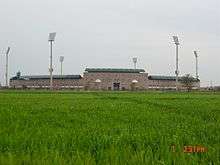
The Multan Cricket Stadium hosted many international cricket matches. Ibn-e-Qasim Bagh Stadium is the other stadium in Multan which is used for football. Multan is home to Multan Tigers, the domestic cricket which represents the city in domestic tournaments. Multan has produced many international cricketers like Inzamam-ul-Haq, Sohaib Maqsood, Rahat Ali, and Sania Khan.
- Professional Multan team
| Club | League | Sport | Venue | Established |
|---|---|---|---|---|
| Multan Tigers | Faysal Bank T20 Cup | Cricket | Multan Cricket Stadium | 2004 |
Prahladpuri Temple

Prahladpuri Temple, Multan is located It is located on top of a raised platform inside the Fort of Multan, adjacent to tomb of Hazrat Baha’ul Haq Zakariya. The Prahladapuri temple like the Sun Temple of Multan had been destroyed after Muslim conquest of Multan, suffered several material losses and was reduced to a nondescript shrine by the 19th century. A mosque has subsequently built adjacent to temple.[25]
The original temple of Prahladpuri is said to have been built by Prahlad, son of Hiranyakashipu, the king of Multan (Kashya-papura)[26] in honor of Narsing Avatar, an incarnation of Hindu god Vishnu, who emerged from the pillar to save Prahlada.[27][28][29][30]
Holi or Holika festival started from this temple
Notable people from Multan

- Shakir Shuja Abadi
- Yousaf Raza Gillani
- Shah Mehmood Qureshi
- Javed Hashmi
- Malik Muhammad Rafique Rajwana
- Fariduddin Ganjshakar
Twin towns – Sister cities
Multan has a friendship agreement with five cities of the world as of 2011:
See also
- Climate of Multan
- City Wall of Multan
- History of Multan
- List of places in Multan
- Multan District
- Multan Division
- Multan Fort
- Multan International Airport
- Multan Museum
- Siege of Multan
- Battle of Multan
- Mausoleums of Multan
- Hindu temples in Multan
- List of educational institutions in Multan
- Mosques of Multan
References
- ↑ http://pcgip.urbanunit.gov.pk/docs/ADPDocumnets/ConsolidatedMultan_ADP.pdf
- ↑ http://www.pbs.gov.pk/sites/default/files//tables/POPULATION%20SIZE%20AND%20GROWTH%20OF%20MAJOR%20CITIES.pdf
- ↑ Multān City - Imperial Gazetteer of India, v. 18, p. 35.
- 1 2 Akshoy K Majumdar, Hindu History, p. 54. Rupa and Co.
- ↑ "Population Size and Growth of Major Cities" (PDF). Pakistan Bureau of Statistics, Government of Pakistan. Retrieved 31 August 2015.
- ↑ "Multan: The city of saints". DAWN. DAWN Media Group. 19 March 2012. Retrieved 27 October 2015.
- ↑ Singh, Fauja. History of the Punjab: Pre-historic times to age of Asoka. Pg.41. Retrieved 2 June 2009.
- ↑ Sircar, D.C. Studies in the Geography of Ancient and Medieval India. Pg.52. Retrieved 2 June 2009.
- ↑ "Multān City – Imperial Gazetteer of India, v. 18, p. 35". Dsal.uchicago.edu. Retrieved 11 August 2012.
- 1 2 3 4 Virani, Shafique N. The Ismailis in the Middle Ages: A History of Survival, A Search for Salvation (New York: Oxford University Press), p. 100.
- ↑ Adrian Marsh. [Gypsies and the problem of identities: contextual, constructed and contested, Volume 2003]. Swedish Research Institute in Istanbul, 2006. ISBN 91-86884-17-4, ISBN 978-91-86884-17-8
- ↑ Beck, Sanderson. "Mughal Conquest of India 1526–56". INDIA & Southeast Asia to 1800. Retrieved 11 June 2009.
- ↑ Tazkirat us-Salatin Chaghta – A Mughal Chronicle of Post Aurangzeb Period (1707–1724) by Muhammad Hadi Kamwar Khan; edited Persian text and with an Introduction by Muzaffar Alam (1980), Centre of Advanced Study Department of History, Aligarh Muslim University, Aligarh (U.P.) -202001, India(page 226)
- ↑ "Dictionary of Battles and Sieges: A-E". Retrieved 29 December 2014.
- ↑ Roy, Kaushik. India's Historic Battles: From Alexander the Great to Kargil. Permanent Black, India. pp. 80–1. ISBN 978-81-7824-109-8.
- ↑ Elphinstone, Mountstuart (1841). History of India. John Murray, Albermarle Street. p. 276.
- ↑ Dictionary of Battles and Sieges: F-O – Tony Jaques – Google Books. Books.google.co.in. Retrieved 11 August 2012.
- ↑ Ranjit Singh: And the Sikh Barrier Between British Empire and Central Asia – William Wilson Hunter – Google Books. Books.google.co.in. Retrieved 11 August 2012.
- ↑ "Multan History -City District Government Multan". Multan.gov.pk. Retrieved 11 August 2012.
- ↑ Multan Developemt Authority Official website says 50 Deg Highest
- ↑ Doaba Foundation web Link about Climate of Multan
- ↑ "Multan Climate Normals 1961–1990". National Oceanic and Atmospheric Administration. Retrieved 16 January 2013.
- ↑ "Dresses For Girls".
- ↑ Transport in Multan Lonely Planet Travel Information. Accessed 15 August 2009.
- ↑ Muslim Saints of South Asia: The Eleventh to Fifteenth Centuries By Anna Suvorova. p. 153.
- ↑ Syad Muhammad Latif (1963). The early history of Multan. p. 3,54.
Kasyapa, is believed, according to the Sanscrit texts, to have founded Kashyapa-pura (otherwise known as Multan
- ↑ Gazetteer of the Multan District, 1923-24 Sir Edward Maclagan, Punjab (Pakistan). 1926. pp. 276–77.
- ↑ Imperial rule in Punjab: the conquest and administration of Multan, 1818-1881 by J. Royal Roseberry. pp. 243, 263.
- ↑ All the year round , Volume 51. Charles Dickens. 1883.
- ↑ Survey & Studies for Conservation of Historical Monuments of Multan. Department of Archeology & Museums, Ministry of Culture, Government of Pakistan
- ↑ "The News International: Latest News Breaking, Pakistan News". The News International, Pakistan.
- ↑ "Ministry of Foreign Affairs". Mofa.gov.pk. 31 October 2008. Retrieved 11 August 2012.
- ↑ "Gilani visits land of his forefathers – Thaindian News". Thaindian.com. 14 September 2011. Retrieved 11 August 2012.
External links
-
 Multan travel guide from Wikivoyage
Multan travel guide from Wikivoyage - Multan City government website
- Britannica: Multan
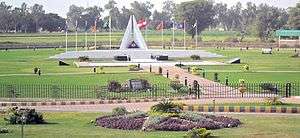


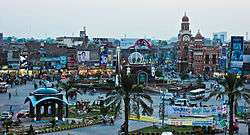
_Districts.svg.png)